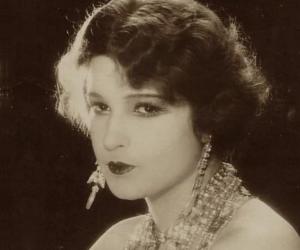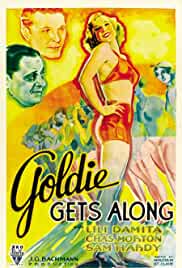While working as a professional model and dancer in Paris, teenaged Lili Damita won a beauty contest for a magazine in 1921 that awarded her a film role. The next year, she appeared in a series of French silent films starting with her debut in ‘L'empereur des pauvres’, followed by ‘La fille sauvage’, ‘Maman Pierre’, and ‘La belle au bois dormant’. She was credited as ‘Lily Deslys’ in these movies, as well as a few others during her early career. She appeared in more French films in the following years, including ‘Corsica’ (1923), ‘La voyante’ (1924), ‘Une femme dans la nuit’ (1924) and ‘Le prince charmant’ (1925), but it is her first leading role in Hungarian-born director Michael Curtiz’s 1925 Austrian silent film ‘Das Spielzeug von Paris’ (‘Red Heels’) that lifted her to stardom. The film was a massive success and prompted Austrian film production company Sascha-Film to make two more silent drama films with the same team and her in the lead: ‘Fiaker Nr. 13’ (‘Cab No. 13’) and ‘Der goldene Schmetterling’ (‘The Golden Butterfly’), both in 1926. She was also noticed by many prominent European filmmakers, allowing her to collaborate with Austrian director G.W. Pabst on ‘Man spielt nicht mit der Liebe’ (‘One Does Not Play with Love’, 1926) and ‘Geheimnisse einer Seele’ (Secrets of a Soul, 1926); German director Robert Wiene on ‘Die berühmte Frau’ (‘The Famous Woman’, 1927), ‘Die Frau auf der Folter’ (‘Scandal in Paris’, 1928) and ‘Die große Abenteuerin’ (‘The Great Adventuress’, 1928); and British director Graham Cutts on the Anglo-German silent drama film ‘The Queen Was in the Parlour’ (‘Die letzte Nacht’, 1927).
It is also after watching her performance in ‘Das Spielzeug von Paris’ that Polish-American film producer Samuel Goldwyn invited DLili amita to Hollywood, following which she made her American film debut with the romantic adventure film ‘The Rescue’ (1929), directed by Herbert Brenon and starring her and Ronald Colman in the lead. While the film was not an immediate success, she was able to charm the American audiences and went on to appear in films by other studios on lease, such as the semi-silent MGM film ‘The Bridge of San Luis Rey’ (1929) and Fox Film’s musical comedy ‘The Cock-Eyed World’ (1929), which was her first “talkies” film, as well as a huge box office hit. She also appeared in the short adventure film ‘Jungle Drums’ the same year. She subsequently appeared in several alternative language versions, mostly French, of American films like ‘Let Us Be Gay’ (‘Soyons gais’, 1930), ‘The Bachelor Father’ (‘Le père célibataire’, 1931), ‘One Hour with You’ (‘Une heure près de toi’, 1932) and ‘The Easiest Way’ (‘Quand on est belle’, 1932). At a time when Hollywood was flooded with exotic beauties, despite her thick accent, she found success in the role of French orphan Felice opposite Gary Cooper in the early western film ‘Fighting Caravans’ in 1931. The same year, she starred in RKO Pictures’ romantic drama films ‘The Woman Between’, in which she played a young wife attracted to a stepson of her own age, and ‘Friends and Lovers’, in which she played the beautiful wife of a sadistic husband who used her to lure men into romance.
Around this period, Lili Damita’s romantic affairs started to affect her career as Goldwyn dropped her because of her clandestine marriage, but she managed to star in films such as ‘This Is the Night’ (1932), ‘The Match King’ (1932) and ‘Goldie Gets Along’ (1933). However, as she started to get less and less offers, she tried to re-kindle her career in France with the 1934 French comedy thriller film ‘On a volé un homme’ (‘A Man Has Been Stolen’). Damita, who previously acted in the plays ‘On Dit Ça’ (1923) in Paris and ‘Sons o'Guns’ (1929-30) in New York, even returned to stage and appeared in the musical ‘Here's How’ (1934) in London, but was sacked after a few days supposedly because she could not deliver across the footlights. While she reportedly walked out of a British film because her role was subsidiary to that of Gertrude Nissen, she starred in the 1935 British musical comedy film ‘Brewster's Millions’. Also that year, she had a supporting role in the American romantic adventure film ‘Frisco Kid’ and appeared in the short comedy film ‘Pirate Party on Catalina Isle’. Her final American movie was the 1936 musical comedy film ‘The Devil on Horseback’, while the last movie of her career was the 1938 French comedy film ‘L'escadrille de la chance’ (‘Escadrille of Chance’).






















